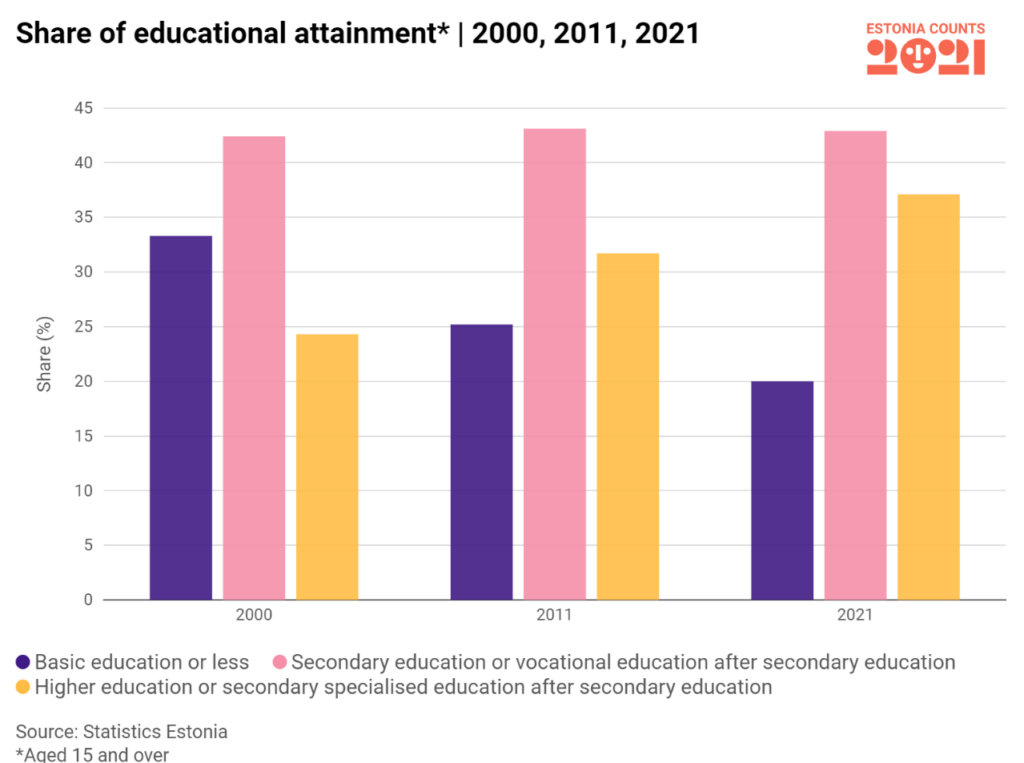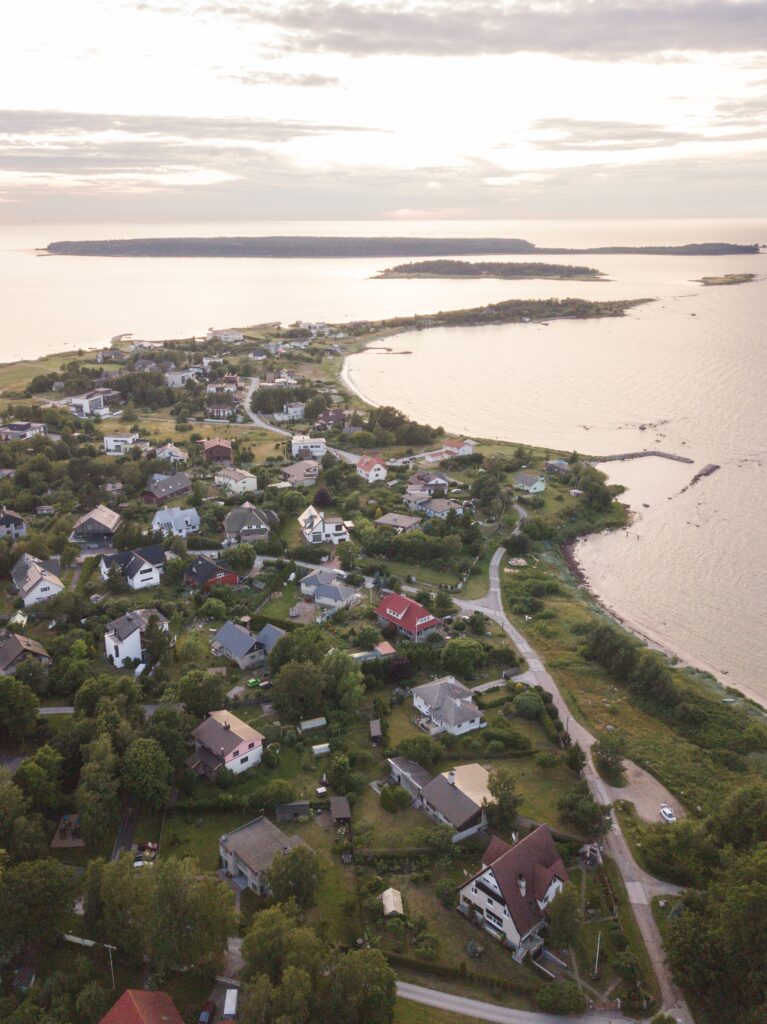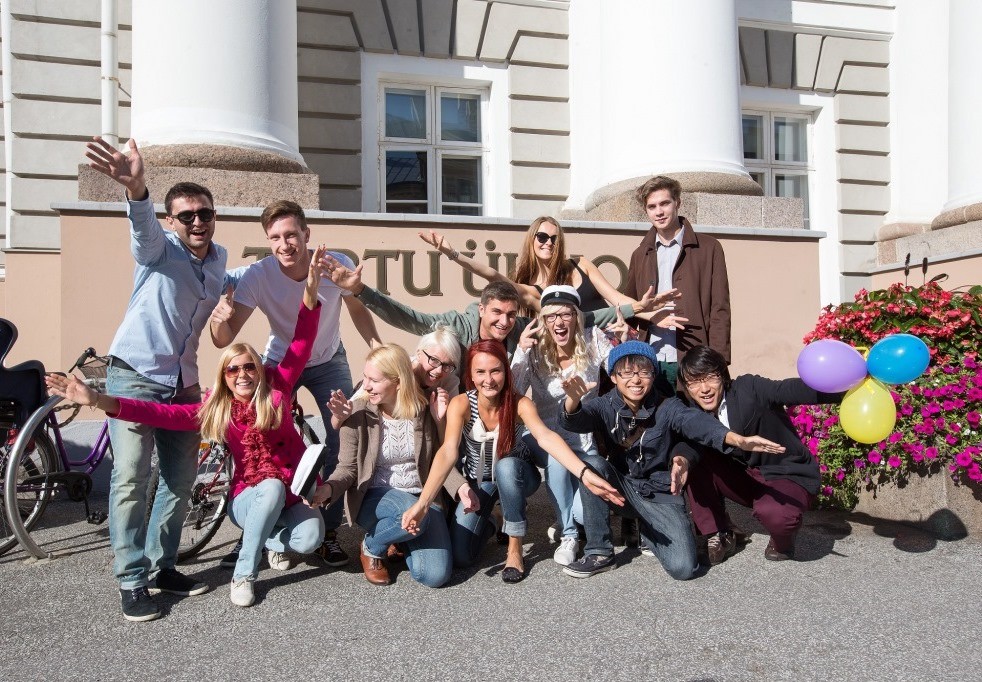Data from the 2021 census show that the share of people with higher education in Estonia is increasing and the share of people with basic education is decreasing – a fifth of the country’s inhabitants have a master’s degree, and Tartu and Viimsi, an affluent municipality in the outskirts of Tallinn, stand out for their particularly high concentration of highly educated people; the educational attainment of native Russian speakers is slightly higher than that of native Estonian speakers.
Triinu Aug, a leading analyst at Statistics Estonia, noted that compared with the previous census, the share of people with higher education has risen and the share of people with basic education has fallen. The proportion of people with secondary education has remained stable.
“Secondary education is the highest educational level for 43% of the population aged 15 and over, and higher education for 37%. 20% of Estonia’s population have basic education or less,” Aug said.
“It makes sense that the highest educational attainment is related to age – older people have had more time to complete various levels of education. For instance, the share of people with basic education is lowest in the 55–59 age group. Then again, half of the people aged 90 and over have basic education or less because they simply did not have access to higher education when they were young.”
Higher education is usually completed by around the age of 25. From then on, the share of the population with higher education remains around 40% up until the age group of 70 years, after which the proportion starts to decline.

City metro areas have the biggest share of people with higher education
The population and housing census data reveal that 21.4% of Estonia’s population aged 25–64 have a master’s degree. 17.4% have vocational secondary education and about the same number (17.2%) have general secondary education.
Thirteen per cent of the population have a bachelor’s degree and 10% have vocational education after secondary education. In the 25–64 age group, the share of people with only primary education (1.1%, 7,752 people) is roughly the same as that of people with a doctorate (1%, 6,805 people).
The biggest share of people with higher education is found in city settlement regions, where 49% of the population aged 25–64 have higher education. In town settlement regions, 47% of the population have higher education and 30% in rural settlement regions.
In comparison of counties, as expected, the highest concentration of 25–64-year-olds with higher education is in Harju and Tartu counties, with 52.6% and 46.1%, respectively. The lowest proportions of people with higher education were recorded in Järva (25.5%) and Jõgeva county (27%).
Looking at the share of people with higher education across municipalities, Viimsi rural municipality stands out with 62.5% of the 25–64-year-olds having higher education.
“Viimsi rural municipality also has the highest proportion of people with a master’s degree – 38%. However, when looking at the share of the population with a doctorate, Tartu city is the clear leader, with 4% of people having a doctoral level degree. The Estonian average is 1%,” Aug said.

Estonia a destination for highly educated immigrants
On average, the educational attainment of native Russian speakers is slightly higher than that of native Estonian speakers. Compared with Estonian speakers, they have a smaller share of people with basic education and a somewhat higher proportion of people with secondary education.
Among the population with some other mother tongue, the share of people with basic or secondary education is much lower – 4.6 and 25.4%, respectively – while the majority (70.1%) have higher education.
“Compared with previous censuses, we have 35% more people with some other mother tongue and higher education than 20 years ago. This means that Estonia is increasingly a destination for highly educated immigrants,” noted Aug. This statistic does not include war refugees who have arrived in Estonia after the moment of census – 31 December 2021.

The population and housing census looks at the highest level of education attained by people living in Estonia. However, regular surveys conducted by Statistics Estonia have shown that in addition to formal education, people are increasingly active in lifelong learning. According to the Estonian Labour Force Survey, participation in lifelong learning has increased by 54% in 10 years and more than tripled in 20 years.
Participation in lifelong learning is higher among women and the more highly educated. Estonia’s lifelong learning participation rate of 18.4% is significantly higher than the EU average of 10.8%.

